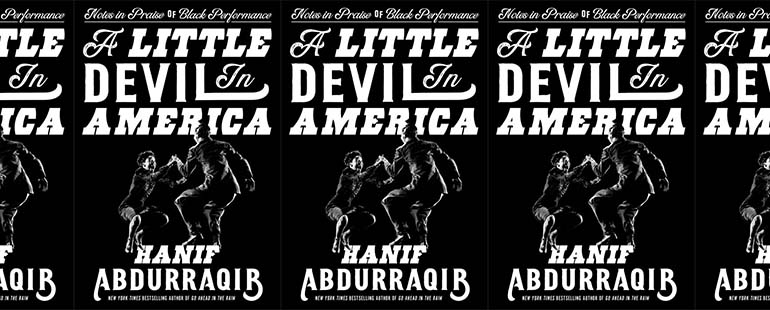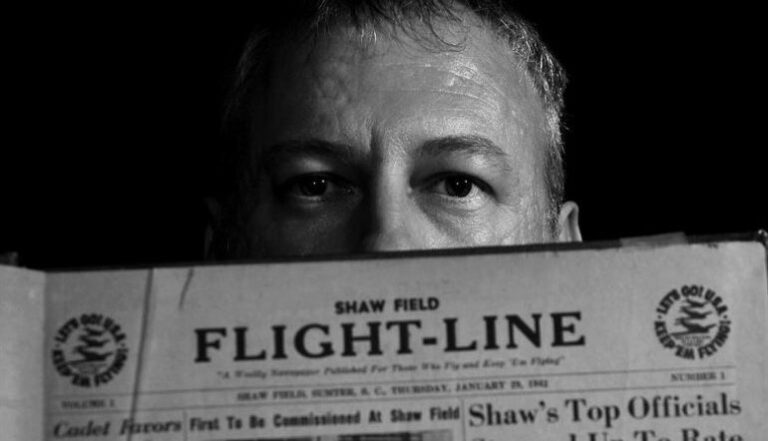The Power of Love in A Little Devil in America

There is a tendency to believe that our love of something, whether it be a book, a movie, or another form of media, precludes us from being able to offer a well-rounded critique of it. In some cases this is true—there are many fans of media titans who are quick to jump on critics who offer negative reviews of their beloved epics. Similarly, there are books and movies that I will never write about simply because I know the personal enjoyment I get out of them eclipses my sense of logic. Nostalgia, too, can emphasize our biases, making our love of that thing so blinding as to erase many of its problems.
But love is far more than a purely positive, warm affect that blinds us from rational, thoughtful critique. Love can also be brutally, piercingly honest about the failings of whoever or whatever receives that love. When you love something, it often means you are willing to look at it more closely, because, for all its faults, it is something that matters to you deeply. This type of love, a love that is willing to face the beloved head-on, is the perfect foundation for the art of criticism.
Hanif Abdurraqib bases much of what he writes on the things he loves, whether that be music or literature, basketball or sneakers. This is true for his latest work, A Little Devil in America: Notes in Praise of Black Performance (2021), which explores the history of Black art and performance, woven through with threads of personal narrative. His approach to blending research and memoir imbues the lives of historical figures with a genuine warmth and care that is often missing from other approaches to reportage and history. No rigor is lost because of this love; in fact, Abdurraqib is even more incisive than critics who may have a bone to pick with the object of criticism. It’s through his love that he is able to reveal insights into the artists and performers themselves, as well as the way that history links to the present—both in his own life and in the wider world.
In the chapter “On the Certain and Uncertain Movement of Limbs”, for example, Abdurraqib reflects mainly on the career of Whitney Houston. He introduces her as the centerpiece of this section with an affectionate honesty: “And I will tell you what I know, and what I know is that Whitney Houston could not dance. I have made my peace with this and I beg of you to do the same. You may not know that Whitney Houston could not dance, but I am telling you that she could not dance to save her life.” What follows is not an exploration of the elements of her life that most of us who know of, and even love, Houston would expect. While Abdurraqib touches on biographical elements as they become pertinent, his focus is on something deeper, including a deep-dive of her stage performances, the cover of her second album, her relationship with her Black fans over the course of her career, and the way that she was positioned within the music industry.
The result is an exploration of Houston that taps into the complicated societal issues around her and her music. Near the end of the chapter, Abdurraqib writes,
I don’t want to talk about the drugs anymore. I don’t want to immortalize the hotel room or the marriage, or all the things Whitney could not be saved from. I want to talk about Whitney in 1988, finding her way into the arms of a Black dancer onstage at the Grammy Awards. I want to talk about Whitney getting booed and then booed and then cheered. But mostly I want to remember Whitney stopped herself from crying when she arrived at the understanding that no matter how much our people love us, they cannot protect us from all the pain that comes with living.
This is the type of criticism that can grow from a place of love: a criticism that refuses to fall into clichés or sensationalism, a criticism that addresses something more meaningful about its subject. It is a love that is willing to be clear-eyed, to everyone’s benefit. The Houston that looks back at readers from Abdurraqib’s writing is not only more nuanced than the Houston who was (and is) often depicted in the media—she is also an entry point into larger issues that touched her life and extend beyond her, offering us a new way to consider her career and the larger structures that she worked within.
Similarly, in “I Would Like to Give Merry Clayton Her Roses,” Abdurraqib’s love for the singer Merry Clayton is on display, as he draws her out and onto the page for those who have never encountered her before. Much of the essay explores her career and her talent, focusing on her powerful background vocals on the song “Gimme Shelter” by the Rolling Stones, but throughout Abdurraqib openly expresses his desire for Clayton to be recognized:
I would like to give Merry Clayton her roses because I have seen her name and cannot unsee the whole life she’s lived every time I close my eyes during the chorus of ‘Gimme Shelter.’ . . . . I would like to do this now, before she is again relegated to the nameless and faceless tragic backup singer. I would like to scale some mountaintop and hold stacks of her solo records in each hand, like a messiah summoning the deprived masses to drink in what they’ve been missing.
There is power in a love that feels strongly enough to write itself into being, a power that can reach out beyond the book, grabbing the reader by the heart in a way that demands action. I had not heard “Gimme Shelter,” from the Rolling Stones’ 1969 album Let it Bleed, and had never heard of Clayton herself. In order to get a better sense of Abdurraqib’s ideas, I put down the book mid-chapter and listened to the song, waiting for the moment that Clayton’s voice came in. As soon as I heard her, I understood Abdurraqib’s love. How many times have I read an essay on a book, a track, a movie, and never felt moved to seek out that thing for myself? Yet, after only a few paragraphs, Abdurraqib’s love for Clayton made me stop what I was doing and listen. Now, whenever I think of “Gimme Shelter,” Clayton is the first thing that comes to mind—had it not been for her, and Abdurraqib’s love for her immortalized in writing, I would not have listened to the song. That is a paltry rose for someone who has lived a life as she has, who has the talent she does, but it is the tiniest manifestation of what Abdurraqib wanted to accomplish. As small as this rose is, I offer it to her, too.
While love propels much of A Little Devil in America, there is also a sense that there is still a limit to how much that love can do. For all the love I now have for Clayton, the love I send will not erase the years she was passed over by the industry, nor the suffering she experienced later in her life. Yet, in Abdurraqib’s work, I see the power of a love that leads to action—love that summons names and faces that deserved so much more, love that is able to peel back the superficial layers to let us explore deeper questions.


